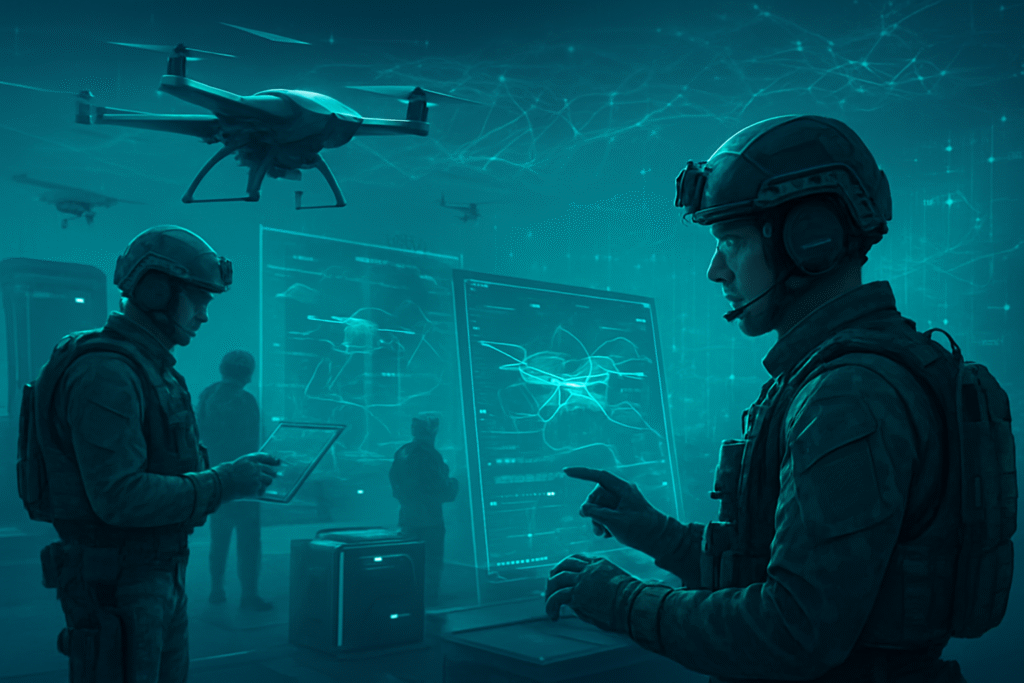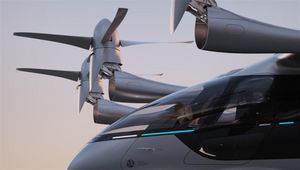Financial News
Indian Army Soars into the Future: Every Soldier to be a Drone Operator by 2027

The Indian Army is embarking on an ambitious and transformative journey, aiming to make every soldier proficient in drone operations and counter-drone strategies by 2027. This monumental undertaking, already well underway with significant milestones in 2025 and further plans for 2026, marks a pivotal shift in India's military doctrine, signaling a deep commitment to integrating cutting-edge technology into its core operational framework. As of November 5, 2025, this initiative is rapidly gaining momentum, positioning the Indian Army at the forefront of modern, technology-driven warfare.
This strategic pivot is driven by the undeniable impact of unmanned aerial systems (UAS) in contemporary conflicts, where drones have proven to be indispensable assets for reconnaissance, surveillance, target acquisition, and even direct engagement. The Army's comprehensive training program is designed not just to operate drones, but to foster an ecosystem of innovation, self-reliance, and tactical superiority, ensuring its forces are future-ready for hybrid and technology-intensive battlefields.
The Drone Revolution: Technical Deep Dive and Strategic Integration
The Indian Army's specialized drone training program is a multi-faceted initiative, encompassing extensive infrastructure development, diverse drone technologies, and a rigorous curriculum. By January 2026, the Army plans to establish 19 dedicated drone training centers at premier military academies across the nation. This is complemented by the recent inauguration of a state-of-the-art drone training laboratory at the Madras Regimental Centre in June 2025, developed in collaboration with Chennai-based Zuppa Geo Navigation Pvt Ltd, and ongoing partnerships with academic powerhouses like IIT Ropar and IIT Guwahati. Furthermore, private entities such as DroneAcharya Aerial Innovations (NSE: DRONEACHARYA) are actively involved, providing specialized training courses for Army officials, as announced in January 2025.
The training covers an extensive array of drone types, reflecting the diverse operational needs of the modern army. Soldiers are being trained on Nano and Micro Drones for basic piloting skills, Small and Medium Drones for day-and-night surveillance and reconnaissance, and First-Person View (FPV) Drones for both surveillance and "kamikaze-style" (loitering munition) missions. A critical focus is also on Swarm Drones, recognized as potent force multipliers capable of overwhelming enemy air defenses through coordinated assaults, and Kamikaze Drones for precision strikes. The Army is procuring approximately 1,000 drones across these categories, alongside 600 training simulators, highlighting the scale of this technological absorption. Indigenous drones like the DRDO Rustom, Nishant, Netra, Lakshya, and Pawan are central to this initiative, emphasizing the "Atmanirbhar Bharat" (self-reliant India) vision.
This approach significantly differs from previous, more limited engagements with drone technology. The curriculum is comprehensive, extending beyond mere piloting to include drone creation, maintenance, and repair, as demonstrated by the 'Drone Workshop' launched by the Battle Axe Division in November 2025. Training modules also cover advanced aerial reconnaissance, real-time data interpretation, tactical employment in battlefield conditions, mission planning, and critical counter-drone strategies involving detection, jamming, and kinetic kill methodologies. The inclusion of Directorate General of Civil Aviation (DGCA) certifications within courses, such as the one conducted at IIT Ropar, further underscores the professional and forward-thinking nature of this program, blending military expertise with civilian regulatory standards.
Internally, the Indian Army's commitment is evident. The year 2024 was declared the "Year of Technology Absorption," setting the stage for this ambitious integration. The Army Training Command (ARTRAC) is spearheading a strategic restructuring to embed UAVs and counter-UAV systems as standard weapon systems at the battalion level across various arms, indicating a deep-seated belief in the transformative power of these unmanned systems.
Market Dynamics: Reshaping the AI and Defense Industry Landscape
The Indian Army's aggressive push into drone technology and training is poised to significantly impact the AI and defense industry landscape, particularly within India. Domestic drone manufacturers and technology providers stand to gain immensely from this initiative. Companies like Zuppa Geo Navigation Pvt Ltd and DroneAcharya Aerial Innovations (NSE: DRONEACHARYA) are already benefiting from direct partnerships and training contracts, securing their positions as key players in India's burgeoning military drone ecosystem. The emphasis on indigenous development also provides a robust platform for the Defence Research and Development Organisation (DRDO) and other Indian startups to innovate and scale their offerings.
This strategic shift has profound competitive implications. By fostering a strong indigenous drone industry, India aims to reduce its reliance on foreign suppliers, thereby enhancing its strategic autonomy and boosting the "Make in India" initiative. This could potentially disrupt traditional defense procurement channels that often favored international vendors. For major global AI labs and tech companies, while direct military contracts might remain within national boundaries, the advancements in drone AI for navigation, object recognition, real-time decision-making, and swarm intelligence developed in India could spill over into civilian applications, creating new market opportunities and competitive pressures.
The expansion of the military drone market within India creates significant strategic advantages for local companies. It encourages investment in research and development, talent acquisition, and manufacturing capabilities, positioning India as a global hub for military drone technology. This robust domestic demand acts as a catalyst for innovation, potentially leading to breakthroughs that could find dual-use applications and open up new export markets in the future.
Broader Implications: AI's March into Modern Warfare
The Indian Army's drone initiative is a stark reflection of a broader global trend: the increasing integration of artificial intelligence and autonomous systems into military operations. Drones, particularly those equipped with advanced AI for real-time data analysis, object recognition, target identification, and autonomous navigation, are becoming central to modern warfare doctrines worldwide. This move by the Indian Army solidifies its commitment to leveraging AI as a critical component for national security.
The impacts of this integration are multifaceted. It promises enhanced situational awareness for commanders, allowing for quicker and more informed decision-making. Precision strike capabilities are significantly improved with loitering munitions, offering a cost-effective alternative to traditional missiles. Furthermore, drones offer unprecedented logistical support in challenging terrains, delivering supplies to remote outposts and significantly reducing risks to human personnel. This initiative fundamentally modernizes India's warfare capabilities, adapting its forces for conflicts where unmanned systems will play a dominant role.
However, the widespread adoption of military AI and drone technology also brings potential concerns. Ethical considerations surrounding autonomous weapons systems, the potential for escalation in conflicts, and the critical need for robust cybersecurity measures to protect drone systems from hacking and jamming are paramount. While the research highlights counter-drone training, the evolving nature of cyber threats demands continuous vigilance. This development can be compared to previous AI milestones, such as the early adoption of AI in intelligence analysis or logistics, but its direct integration into front-line combat operations marks a more profound and immediate transformation of the battlefield.
The Horizon: Future Developments and Expert Predictions
Looking ahead, the Indian Army's drone program is poised for continuous evolution. The full operationalization of the 19 drone training centers by January 2026 will be a critical near-term milestone, accelerating the pace of soldier proficiency. The long-term vision of universal drone proficiency by 2027 will necessitate sustained investment in training infrastructure, curriculum updates, and the continuous integration of newer drone technologies. The Army's focus on 33 "niche technologies," including cyber warfare, battlefield AI, and electronic warfare systems, indicates a holistic approach to future-proofing its forces.
Potential applications and use cases on the horizon are vast. Advanced Intelligence, Surveillance, Target Acquisition, and Reconnaissance (ISTAR) capabilities will be crucial for border monitoring and anti-terrorism operations. High-altitude operations, as showcased by events like HIM-DRONE-A-THON in Ladakh, will see further development, crucial for securing challenging mountainous terrains. The emphasis on drone creation and repair also suggests a future where forward operating bases could become self-sufficient in drone maintenance and even rapid prototyping.
Challenges remain, primarily in maintaining a robust and secure indigenous supply chain for drone components, ensuring continuous research and development to stay ahead of adversarial technologies, and establishing comprehensive ethical and regulatory frameworks for the deployment of increasingly autonomous systems. Experts predict a future battlefield characterized by sophisticated human-AI teaming, where soldiers and autonomous systems collaborate seamlessly. The Indian Army's initiative positions it well to lead in this paradigm shift, with a focus on not just acquiring technology, but deeply embedding it within its human capital.
A New Era of Military Readiness
The Indian Army's commitment to making every soldier a drone operator by 2027 represents a monumental leap in its modernization efforts and a definitive embrace of AI-driven warfare. This initiative, characterized by extensive training, indigenous development, and strategic partnerships, underscores a clear vision for a technologically advanced and self-reliant defense force. The establishment of numerous training centers, the diverse array of drones being integrated, and the comprehensive curriculum covering everything from piloting to maintenance and counter-drone strategies, collectively signify a profound transformation.
This development is not merely an incremental upgrade; it is a fundamental redefinition of military readiness in the 21st century. It positions India as a significant player in the global race for AI and drone supremacy in defense, while simultaneously fostering a vibrant domestic defense technology industry. The long-term impact will be a more agile, responsive, and lethal Indian Army, capable of addressing complex security challenges with precision and innovation.
As the training centers become fully operational in the coming months and the 2027 proficiency goal draws closer, the world will be watching closely. Key indicators to observe will include the continued pace of indigenous drone development, the effectiveness of integrated drone units in exercises, and the overall impact on India's strategic defense posture. This is more than just a training program; it is the genesis of a new era for the Indian Army, powered by the transformative potential of artificial intelligence and unmanned systems.
This content is intended for informational purposes only and represents analysis of current AI developments.
TokenRing AI delivers enterprise-grade solutions for multi-agent AI workflow orchestration, AI-powered development tools, and seamless remote collaboration platforms.
For more information, visit https://www.tokenring.ai/.
More News
View More




Recent Quotes
View More
Quotes delayed at least 20 minutes.
By accessing this page, you agree to the Privacy Policy and Terms Of Service.



